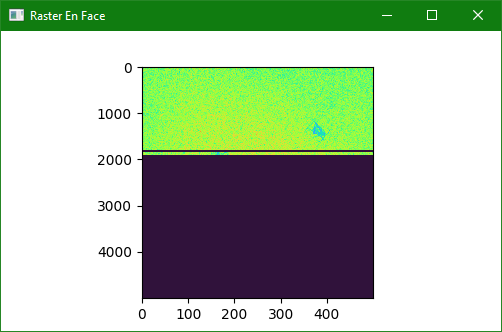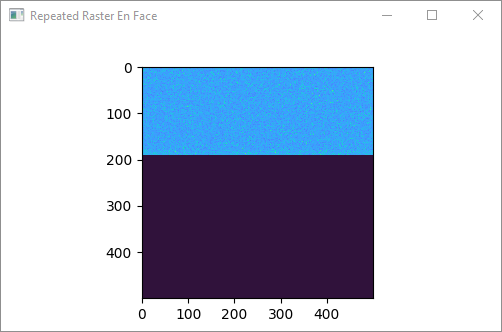Live View Repeated#
This demo illustrates how to perform a repeated scan and display the variance between repetitions on a user interface.
Central to this demo is understanding how RasterRepeatedScan organizes segments in memory for convenient post-processing.
The variance is incrementally computed as the scan progresses.

All acquired segments grouped by repetition. Note that some segments prior to the leading edge have not yet finished repeating, producing a dark band behind the leading edge.#

Variance of acquired segments.#
Incremental Processing of Repeated Scans#
def _update_image(self, endpoint, raw_bscan_idxs):
with endpoint.tensor as volume:
endpoint.stream.synchronize()
updates = {}
for idx in raw_bscan_idxs:
# which repeated bscan was updated
bscan_idx = idx // self._repeat_count
# which repetition number
repeat_idx = idx % self._repeat_count
# accumulate
updates.setdefault(bscan_idx, []).append(repeat_idx)
# update appropriate repeated bscans
for (bscan_idx, repeat_idxs) in updates.items():
# update based on the most recent repeat
repeat_idx = max(repeat_idxs)
# compute index into volume
start = bscan_idx * self._repeat_count
end = start + repeat_idx + 1
# check validity
if bscan_idx * self._repeat_count + repeat_idx > volume.shape[0]:
continue
# compute variance SVP
self._image[bscan_idx, ...] = cupy.asnumpy(cupy.max(cupy.std(volume[start:end, ...], axis=0, keepdims=True), axis=2))